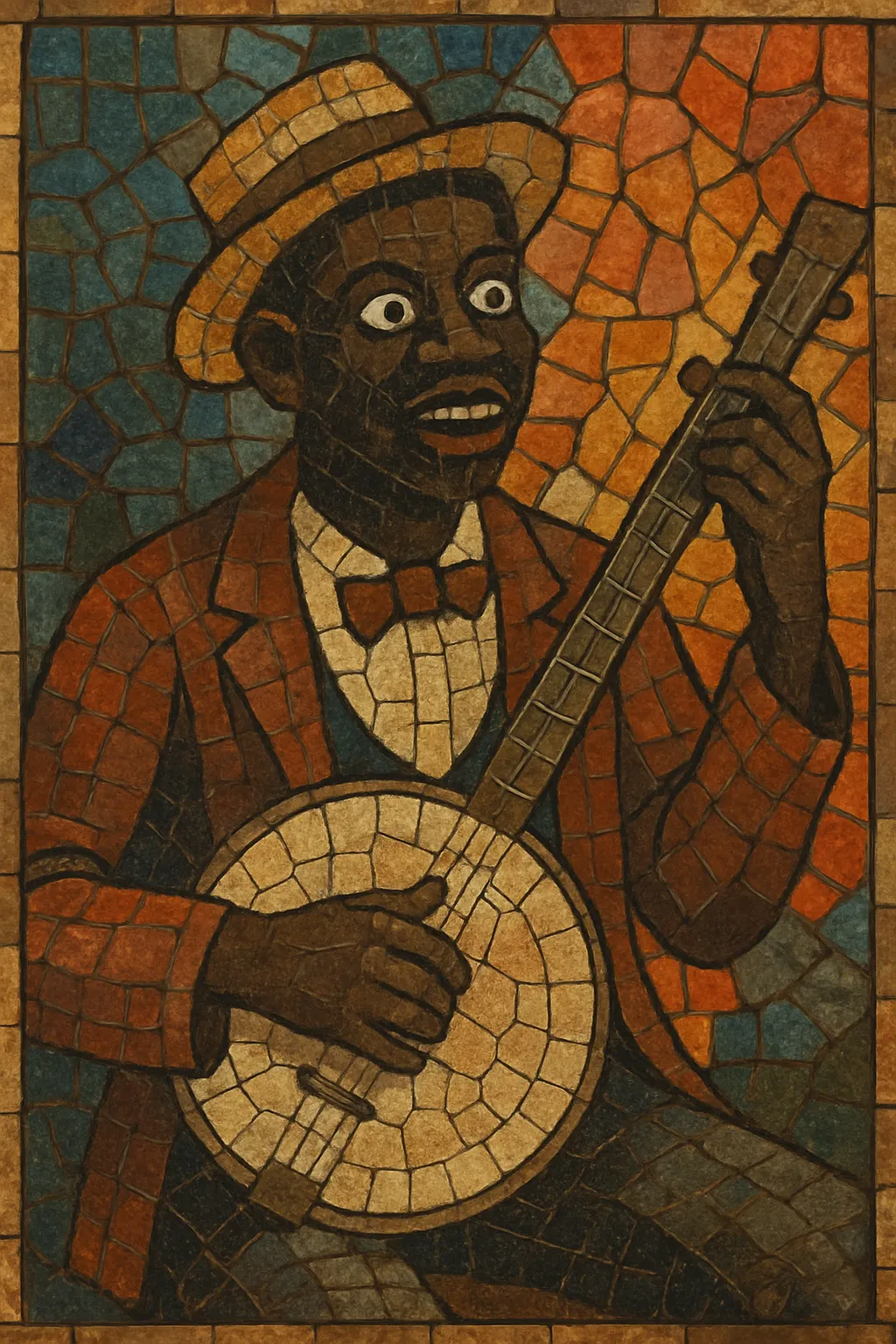
Coon song is a late-19th- and early-20th-century American popular song style associated with vaudeville and the Tin Pan Alley sheet-music industry.
Musically, it often features lively 2/4 or 4/4 meters, cakewalk- and ragtime-derived syncopation, simple diatonic harmonies (I–IV–V with secondary dominants), and memorable, comic chorus hooks. Performances ranged from solo singers with piano to small ensembles with banjo and brass.
Historically, the repertoire propagated racist caricatures of African Americans through dialect writing and stereotyped imagery. While some Black performers and composers worked within or adjacent to the format (sometimes subverting it or reshaping it toward ragtime and musical theater), the genre today is studied as a critical, cautionary chapter in American popular music history rather than as a living style.
Coon songs grew out of 19th‑century minstrelsy and parlor/vaudeville song, as publishers in the emerging Tin Pan Alley sought lively, comic material that would sell sheet music. Early examples folded in cakewalk rhythms and the rising taste for syncopation that would soon crystallize as ragtime.
The 1890s saw a commercial explosion: catchy refrains, comic patter, and syncopated accompaniments made these songs best‑sellers on sheet music and early recordings. The repertoire thrived on vaudeville circuits and in musical comedies. Some Black composers and performers—among them Ernest Hogan and the duo Bert Williams & George Walker—navigated the industry’s demands while contributing materially to ragtime and musical theater; at times they also pushed back against caricature through wit, dignity, and innovative stagecraft.
As public attitudes slowly shifted and civil rights activism grew, protests and critical commentary targeted the derogatory imagery embedded in the songs. Publishers and performers increasingly retitled, sanitized, or rebranded numbers as “ragtime songs,” and the center of gravity moved toward ragtime, early jazz, and vaudeville blues. By the 1910s the label and format were fading from mainstream use.
Today, coon songs are examined in historical context: as artifacts of systemic racism and as vectors that, through their syncopation and show-business infrastructure, helped mainstream rhythms and performance practices that fed into ragtime, Tin Pan Alley songcraft, and early jazz. Scholarly and historically informed performances treat the material critically, foregrounding context and avoiding repetition of harmful stereotypes.
-
•
Sketch a 16-bar verse (I–vi–ii–V or I–IV–V cycles) with syncopated melody.
•Craft a contrasting, hooky 8- or 16-bar chorus; consider a short modulation or a secondary dominant lift.
•Arrange for piano (stride/oom‑pah left hand; syncopated right-hand figures), add banjo/clarinet for color.
•Add stageworthy interludes (tags, vamps) to support comic timing and audience interaction.

